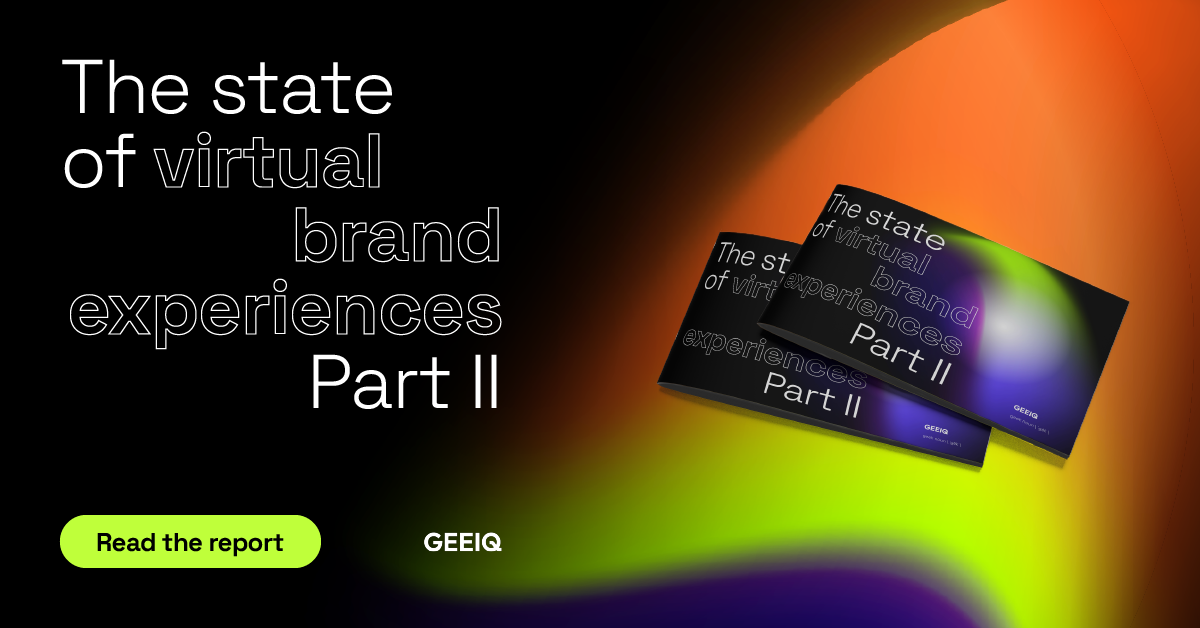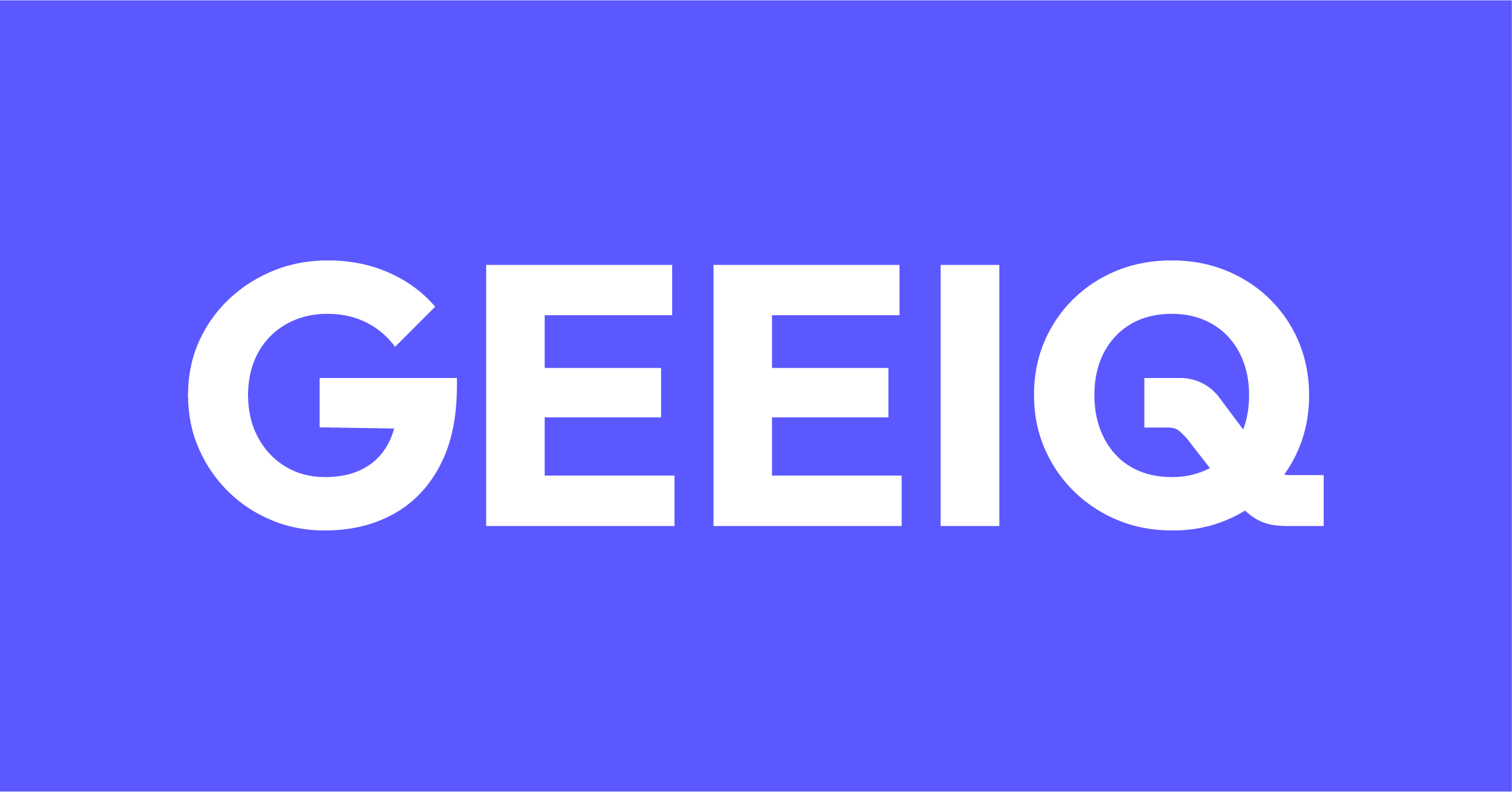
Why are brands investing in gaming?
In the first half of 2023, more than 350 brands had activated in virtual worlds like Roblox, Fortnite, Minecraft and ZEPETO. By the end of the year, that number had more than doubled.
So, what’s behind this rapid growth? Why are so many brands investing in gaming and virtual worlds? Is it really an immersive evolution of social media? And will 2024 be the year it’s recognized as an essential channel for brand marketers?
1. Gen Z and Gen Alpha are more engaged in gaming than social media.
We live in an attention economy. As such, video games are no longer just entertainment. They’ve become a powerful, new communications vertical.
When it comes to gaming vs social media, gamers look much more likely to engage with advertising in video games. Between 2023 and 2027, people are expected to increase their daily gaming time to two hours per day. In contrast, social media usage is projected to remain under two hours in its current form.
Video games also tap into younger audiences that are typically elusive and difficult to reach through other digital channels. In fact, GEEIQ’s 2023 report found that under 25s typically spend 180 minutes on Roblox, compared to 107 minutes on Tiktok.
By tapping into gaming, brands can drive meaningful and long-lasting engagement in an immersive style. That same effect cannot be reached through social media today, which offers a far more passive experience. In this way, virtual worlds become strategic platforms for brands, enabling them to connect with harder-to-reach audiences where they’re active.
2. The immersive nature of virtual worlds fosters brand affinity.
Investing in virtual experiences sows the seeds for long-term brand loyalty, allowing consumers to forge a more personal connection with the brand.
Based on a survey of Gen Z’s by The Business of Fashion, GEEIQ data suggests that the more experiences brands create in popular gaming platforms, the more favorably Gen Z views them.
Brands like Gucci, which has launched multiple virtual activations across multiple platforms, are held in higher regard than Adidas, Levi’s and Forever 21. Just last week, Gucci launched its fourth activation on South Korean-based platform, ZEPETO.
In contrast, brands with fewer virtual activations are less likely to be on Gen Z’s radar. Once again, gaming platforms enhance brand loyalty in ways traditional advertising is struggling to match.
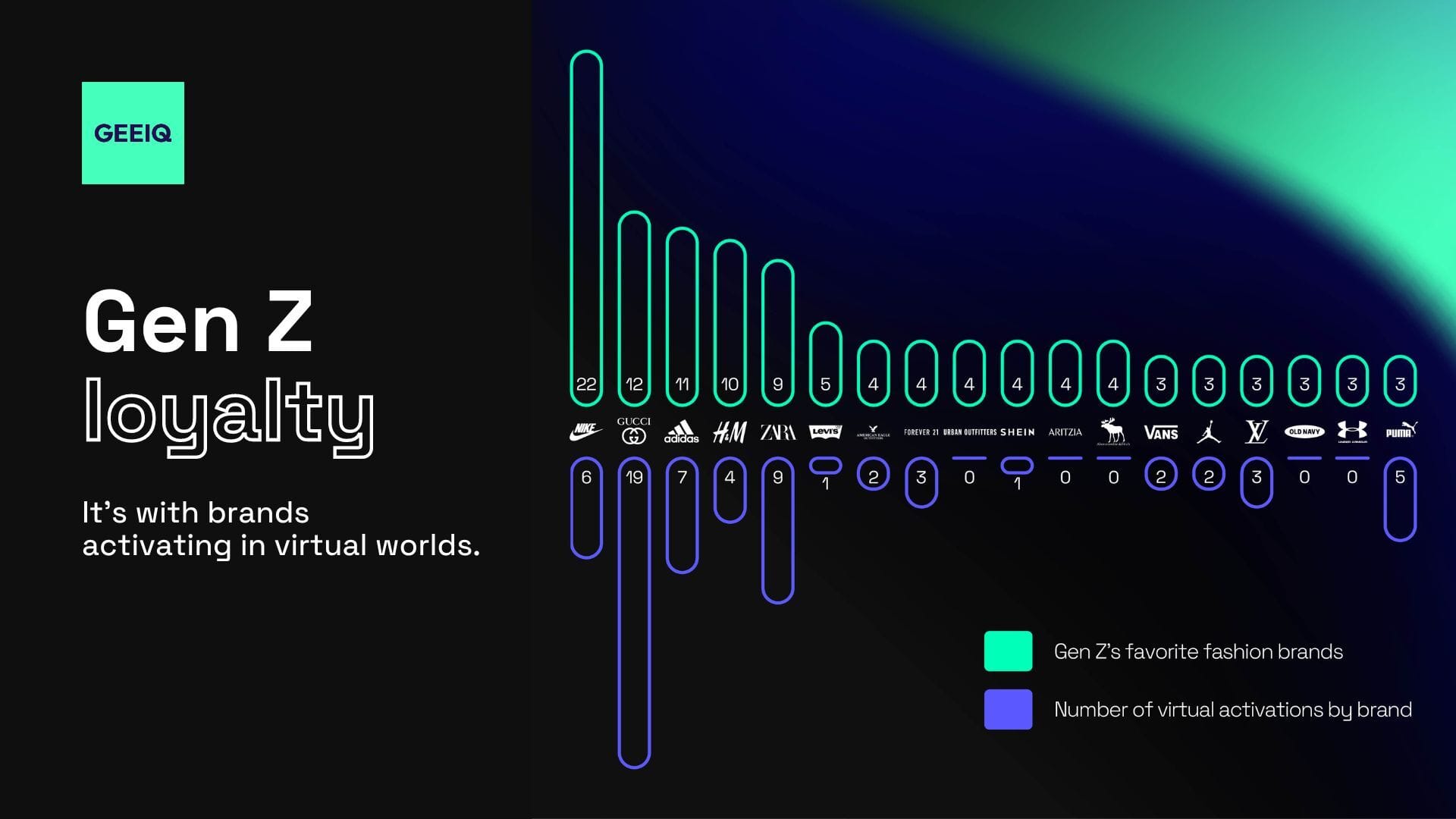
3. You can monetize gaming to diversify revenue streams.
Virtual worlds open new avenues for revenue generation, allowing brands to explore innovative ways to monetize their activations.
UGC (User-generated content) on Roblox is a great example of this. Roblox’s marketplace allows creators to get a share of in-game and marketplace purchases.
Brands can also create revenue opportunities for the Roblox community through the sales of limited items, which can be sold on the secondary market, sometimes for a profit. To learn more about this, you can read GEEIQ’s insight on Burberry’s Roblox limiteds drop back in 2022.
4. Brands can innovate, test, and learn more about their audience.
Gaming worlds offer brands a new medium to learn more about their audience, gather data, and conduct market research.
Some brands have already started using Roblox as a testing ground for real-life products. In 2021, Forever 21 infamously launched a physical line of clothes, the ‘Metaverse Collection’, after the success of a virtual hat it released on Roblox.
More than this, platforms like GEEIQ allow you to compare audience analytics of gaming platforms including age group, gender, location, income, and even affinity with other brands.
This not only enables brands to choose the platform that best aligns with their values, but it helps them to understand what their audience is interested in and how they can maximize engagement.
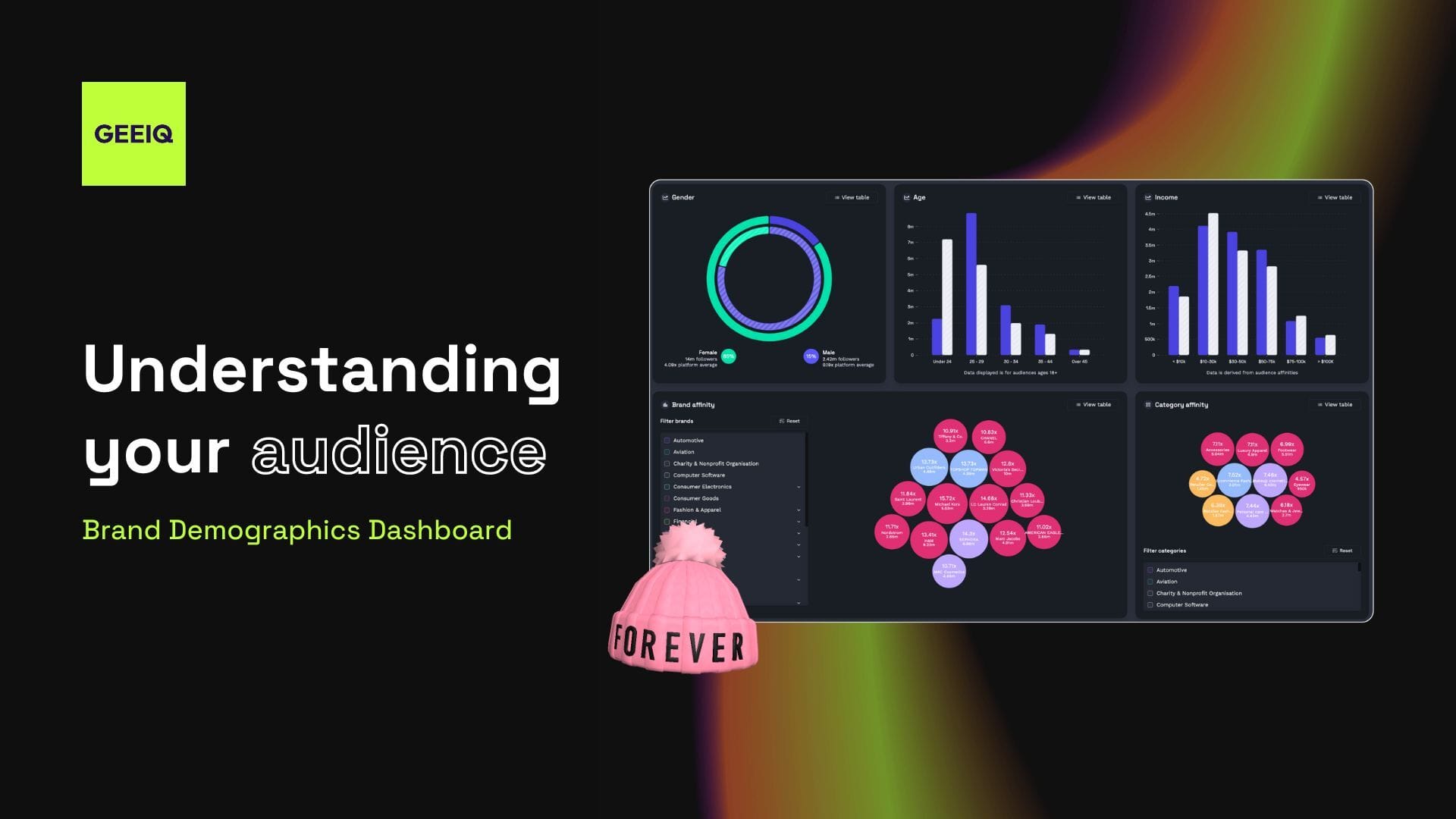
5. Brands can use gaming to get ahead of competitors.
As more brands enter gaming and the wider virtual landscape (including 3D stores created by the likes of Emperia and Obsess), the space is becoming increasingly competitive for brands.
In a post-pandemic world it was Fashion & Apparel that led the charge for brands activating in virtual worlds, but in 2024 we see verticals of every type entering the battle for Gen Z attention, from Automotive, to Banking & Finance.
Take Sport, Fitness & Health, between 2022-2023 virtual activations from this industry grew 213%.
Brands are in a race to capitalize on the virtual world business opportunity. Those who don’t have insights into competitor strategies and can’t benchmark their activations against them are more likely to lose out in the long-run.
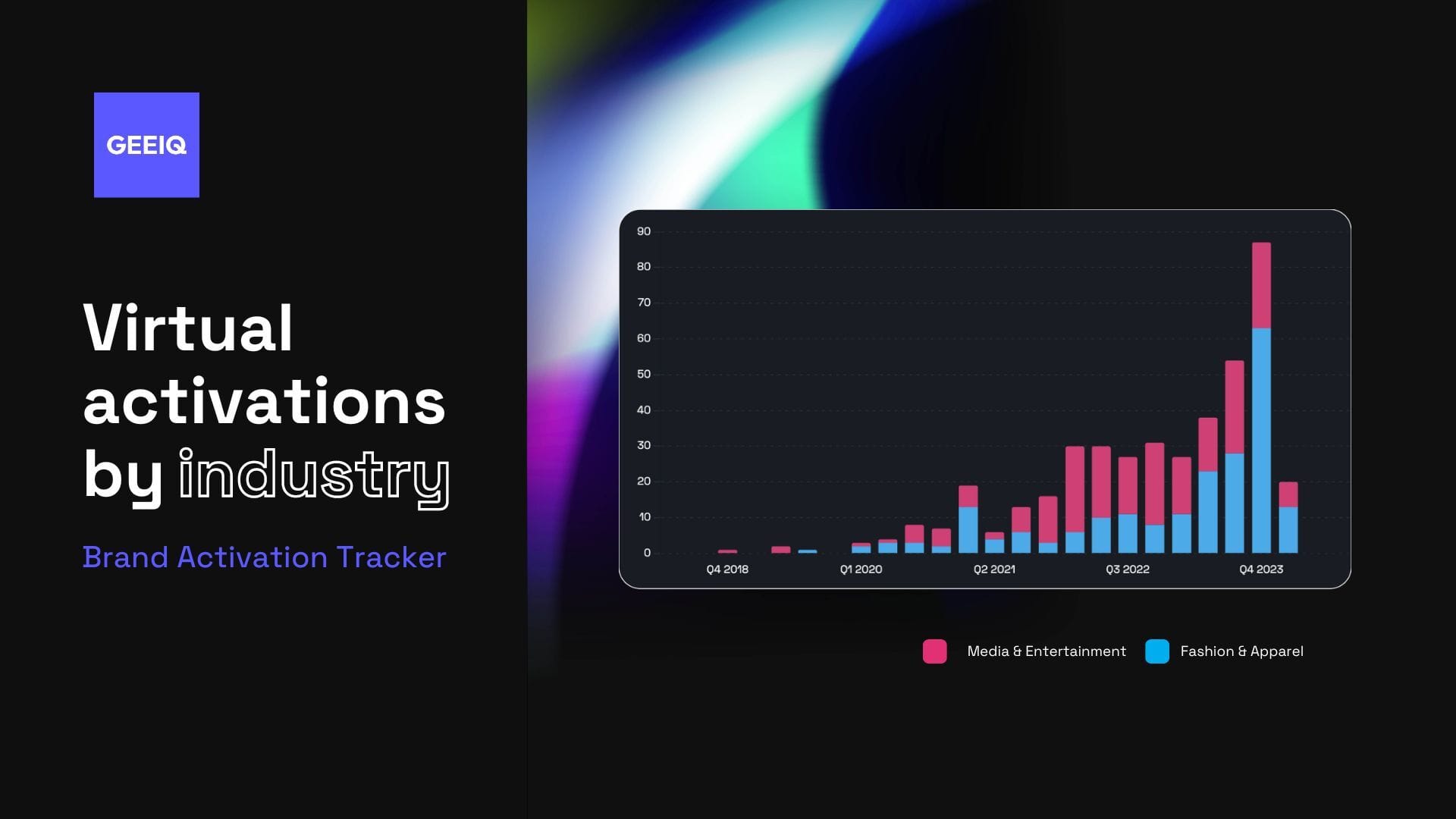
6. The barrier to entry is lowering.
UGC-based platforms, like Roblox and Rec Room, have made virtual brand activations more accessible, in comparison to other gaming environments like Fortnite and Minecraft. Though there have been 210 brand activations in Fortnite across time, there are still more on Roblox.
Brands can work with developers who are native to these spaces to craft unique activations, from one-off UGC items to immersive brand experiences. More recently, time-limited brand integrations into existing experiences, such as L'Oreal Paris in Roblox's Livetopia, have become more popular, growing 110% on Roblox in 2023. To date, there have been 178 brand integrations on Roblox.
Integrations allow brands to tap into popular experiences without the need for heavy investment into persistent experiences and are well matched with campaign-based activations.
We asked Jason Stayaert, part of the team behind Livetopia, which has had over 4 billion visits since launching in 2021, why brand integrations are on the rise.

Key Takeaways
The popular, immersive, and interactive nature of gaming means this new marketing channel will continue to grow in scale. Its benefits for brand loyalty and engagement are too worthwhile for brands to miss out on. Brands that get involved will connect with their audiences in more meaningful and fruitful ways than ever before.
In the words of Charles Hambro, CEO & Co-Founder of GEEIQ, ‘brands are clearly becoming more mature in this new communication vertical. Not only are they more consistent and confident, but the ways in which they’re activating continues to diversify.’
To learn how your brand can get ahead of the curve in the virtual world, read our latest report, The State of Virtual Brand Experiences Part II.
